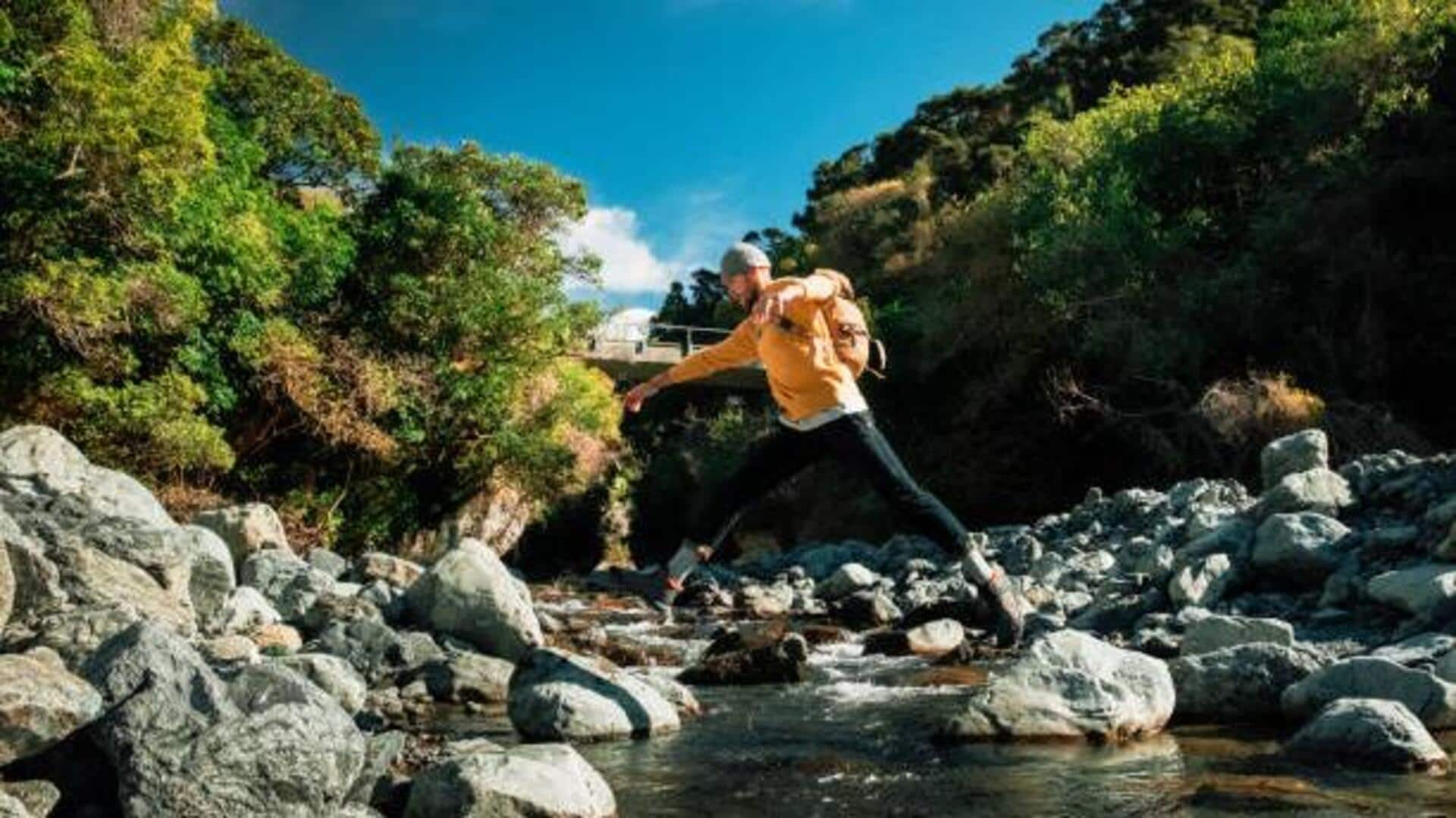
River fording 101: Tips, tricks, and must-knows
What's the story
River fording is an exhilarating part of trekking that challenges your skill and courage. It means crossing rivers without a bridge, using nature and your own skill. It takes a lot of planning, knowledge of river dynamics, and a daring attitude to deal with the unpredictable nature of water. For those looking to take their trekking experience up a notch, river fording is unique.
River dynamics
Understanding river dynamics
Before attempting a river ford, it's crucial to understand how rivers behave. Factors such as water speed, depth, and obstacles can significantly impact safety. For example, fast-moving water can be deceptively deep and strong. However, observing the river's flow patterns helps identify safer crossing points where the current is slower or shallower. Awareness of these elements aids in making informed decisions during the crossing.
Gear essentials
Essential gear for safe crossing
Proper gear is essential for a successful river ford. Waterproof boots not only provide traction on slippery rocks but also keep your feet dry. A sturdy walking stick gives you balance against strong currents. Wearing quick-drying clothes minimizes discomfort after crossing. Also, packing essentials like a waterproof bag makes sure your valuables remain safe from water damage during the adventure.
Fording techniques
Techniques for effective fording
Mastering specific techniques makes fording rivers a lot safer. Facing upstream while crossing gives you better stability against the current's force. Moving sideways instead of directly across minimizes resistance from flowing water. Using a buddy system makes it a lot safer too, as you can support each other if anyone loses balance or faces difficulty mid-crossing.
Safety precautions
Safety precautions to consider
Safety has to be your priority while crossing rivers. Never attempt crossings alone. Having companions ensures that help is there if you need it quickly during emergencies, like slips or falls into deeper portions unexpectedly encountered on your way through nature's waterways. Always check weather forecasts before heading out. Rain upstream may cause sudden rises in water levels downstream where you're planning your trek today.